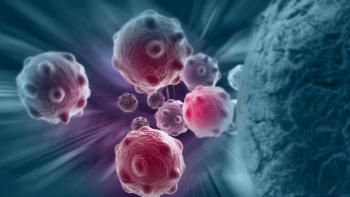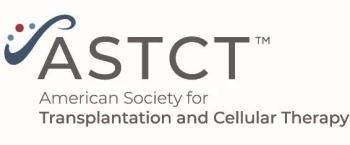
Addressing Myelosuppression While Managing BPDCN With Tagraxofusp
Before closing out their review of adverse events associated with tagraxofusp, Thomas Leblanc, MD, and Bhumika Patel, MD, reflect on the identification and management of myelosuppression.
Episodes in this series

Transcript:
Thomas Leblanc, MD: Dr Patel, what about myelosuppression? We’ve talked about the main toxicity of tagraxofusp being capillary leak syndrome, but what about the incidence of myelosuppression, and what do you do about it when that happens?
Bhumika Patel, MD: The main things in myelosuppression, if you think about our standard cytotoxic therapies we use for AML [acute myeloid leukemia] and ALL [acute lymphocytic leukemia], we help our patients with good supportive transfusions, and we make sure they are on empiric antibiotics as needed depending on the severity of their cytopenias, especially for their neutropenia. What was interesting here, it was mainly thrombocytopenia and anemia, which we can manage very well with transfusional support. From that angle if you look at it, about 20% to 43% had anemia or thrombocytopenia. I think that’s well managed, you can manage those supportive transfusions. Even after the discharge of a patient once they’re cleared clinically, you can manage these cytopenias [while they are an] outpatient. What was interesting to me is the risk of infection was minimized. You don’t see that as one of the AEs [adverse effects], neutropenia, sepsis. Capillary leak is on our radar; the severity of capillary leak can be very serious if you don’t identify and appropriately manage it. But I feel like from the standpoint of infection, that was mitigated here compared to the cytotoxic therapies we use for AML and ALL, which could be potentially used for blastic plasmacytoid dendritic cell neoplasm [BPDCN].
Thomas Leblanc, MD: What a great point, that we’ve talked about the safety data of showing what is there. But you’ve got to also recognize what’s not there. And looking at that list of AEs of any grade that happened in at least 20% of patients, neutropenia is not there, and infection is not there. And it would be with all of the other therapies that we had talked about for AML or ALL that have been used historically for this disease. So that’s a really interesting, important observation. Looking at the more severe AEs, thrombocytopenia is the one that stands out, with about 33% of these patients having that at a grade 3 or higher level. Most of the time it’s going to be grade 1 or 2, mild or moderate, anemia or thrombocytopenia, which are readily manageable with good supportive care. It’s relatively unusual to have more severe or potentially life-threatening thrombocytopenia, where you would even have to give transfusion support. But every once in a while, you will see some significant platelet count issues with this therapy.
Bhumika Patel, MD: This may also add to the fact that tagraxofusp is a good agent to use in the first line as a bridge to transplant because we’re mitigating the risk of infection. These are manageable AEs for patients to be able to safely get through therapies but not have any infectious complications, which we worry about with fungal and bacterial infections for patients on the standard induction regimens for ALL and AML.
Thomas Leblanc, MD: Well said.
Transcript edited for clarity.
Newsletter
Stay up to date on recent advances in the multidisciplinary approach to cancer.



















































































